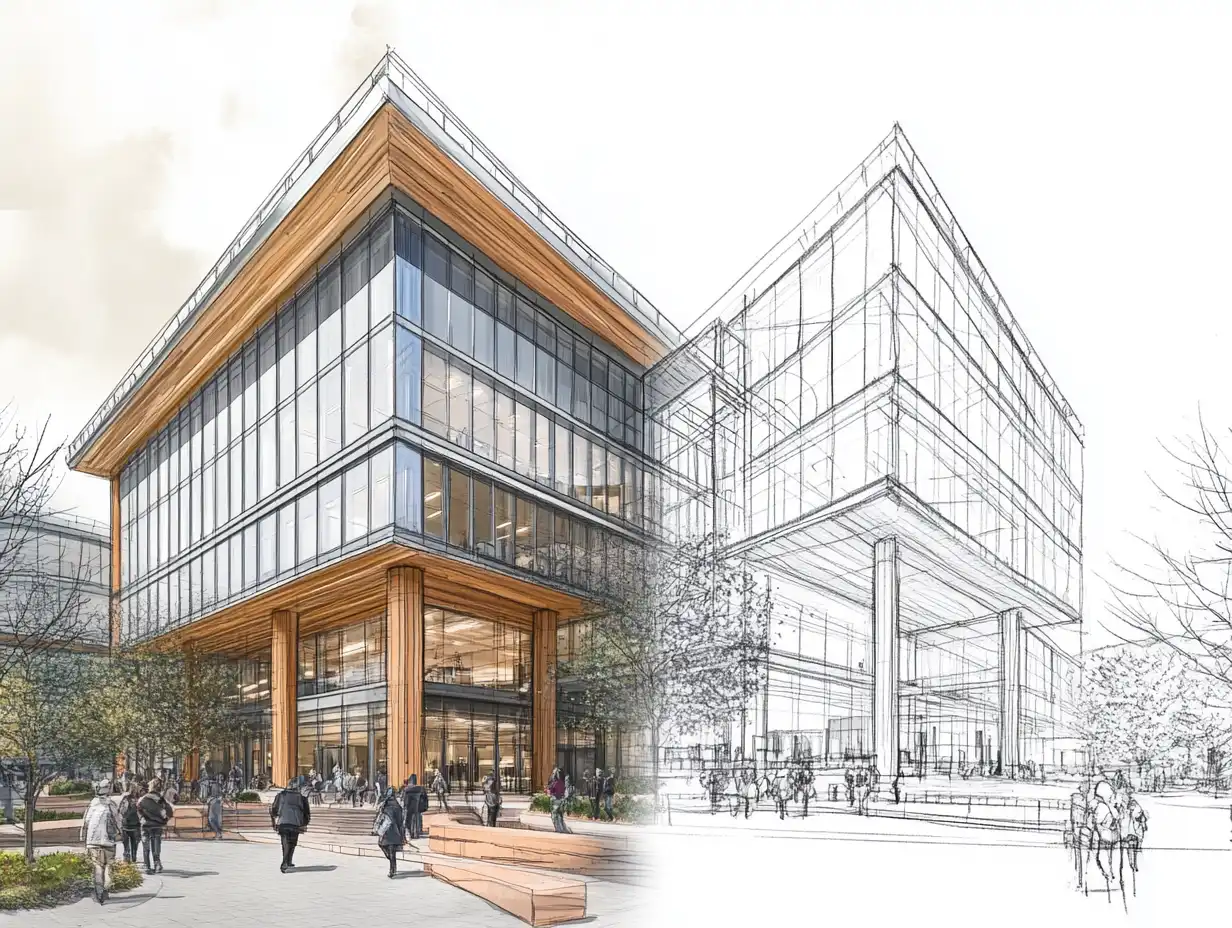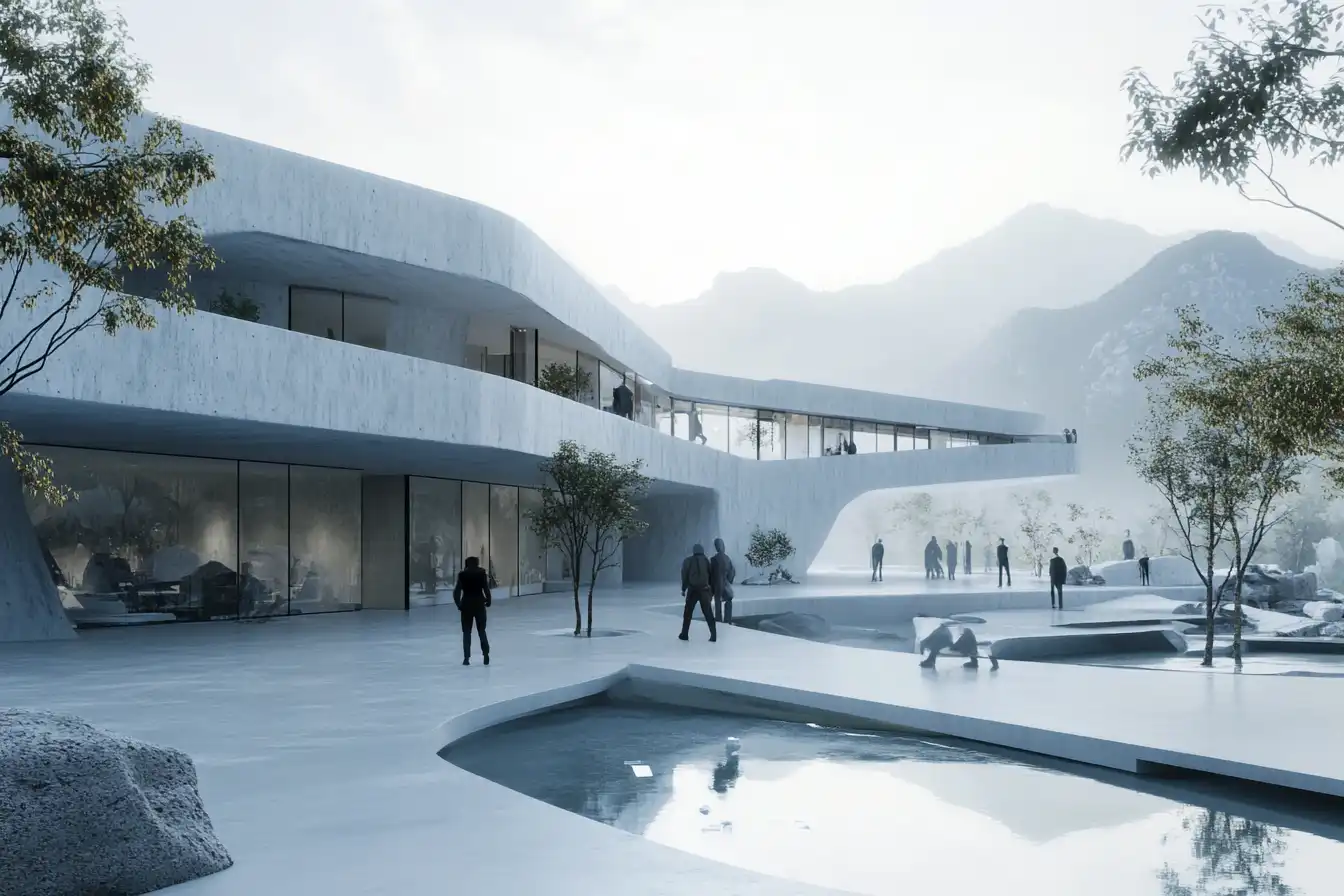In the bustling world of architectural design, the right tools are paramount to turning visionary concepts into tangible plans. Autodesk stands out as a beacon for professionals, offering a suite of applications that cater specifically to architects’ needs. These tools not only streamline the design process but also enhance accuracy and efficiency, making them a top choice among industry professionals.
Among these, applications like AutoCAD and Revit have revolutionized how architects draft and visualize their creations, ensuring precision down to the smallest detail. These programs support a wide array of functionalities from basic drafting to advanced 3D modeling, catering to both the artistic and practical aspects of architectural work. We’ll explore how Autodesk applications have become indispensable in the architectural community, helping to shape the skylines of tomorrow.

Overview of Autodesk Applications for Architectural Drawings
Autodesk’s suite of applications has revolutionized the way architects design and visualize constructions. In this section, we delve into the specifics of how Autodesk tools like AutoCAD and Revit cater to the needs of the architectural community.
Key Features and Benefits
Autodesk applications offer a plethora of features that significantly enhance the architectural drawing and modeling process. AutoCAD, known for its precision and flexibility, offers powerful drafting tools that allow for meticulous detail work, essential for creating accurate blueprints and schematics. Users can draw both 2D and 3D structures, manipulate viewpoints, and scale objects to exact dimensions with ease.
Revit, on the other hand, focuses on building information modeling (BIM). This application not only supports the creation of detailed architectural designs but also facilitates real-time collaboration among multiple project stakeholders. Its features enable users to track various stages of a building’s lifecycle, from concept through construction and beyond. Automation tools within Revit streamline the tedious tasks involved in drafting, allowing architects to focus more on design elements. For instance, changes made to a model’s plan automatically update all related views and sheets, enhancing efficiency and reducing error potential.
Together, these applications ensure architects can render realistic models, predict cost estimates, and simulate the actual behavior of buildings even before physical construction commences.
Evolution and Enhancements
Throughout the years, Autodesk has continuously evolved its suite of applications to meet the ever-changing demands of architecture. New updates and capabilities are regularly introduced, ensuring that the tools remain at the forefront of architectural design technology.
Significant advancements include the integration of AI and machine learning, which have dramatically improved the functional capabilities of Autodesk products. AutoCAD now features smarter tools like the ‘Drawing History’ function, which provides insights into past changes, and the ‘Compare’ feature, which identifies and highlights differences between various iterations of a drawing.
In Revit, enhancements include improved BIM collaboration environments and more sophisticated modeling tools that cater to complex architectural requirements. The addition of detailed environmental settings allows architects to assess how environmental factors will impact their designs.
These enhancements not only streamline workflow but also empower architects to achieve higher levels of creativity and precision in their projects. As Autodesk continues to innovate, its applications consistently set newer benchmarks in architectural software.

Popular Autodesk Tools for Architects
2D and 3D Design Tools
Autodesk offers robust 2D and 3D design tools that vastly enhance the architectural drawing process. AutoCAD stands out as a key player, renowned for its precision in creating and editing detailed technical drawings and documentation. It addresses both basic and advanced project needs with an extensive library of tools and features, from simple lines and shapes to intricate 3D models. AutoCAD’s compatibility with various file types and its ability to seamlessly integrate with other Autodesk products elevates its utility, making it indispensable for architects needing detailed, scalable models.
BIM (Building Information Modeling) Tools
Revit, another powerful tool by Autodesk, transforms BIM workflows with its sophisticated approach to designing and managing building projects. Serving more than just architectural design, Revit also accommodates structural engineers and construction professionals. It supports a cohesive project environment where changes made to a model are automatically updated in plan views, sections, and schedules, enhancing consistency and reducing errors. The tool incorporates real-time collaboration features, allowing multiple users to work on the same project file simultaneously, thereby streamlining project timelines and improving outcome predictability.
Rendering and Visualization Solutions
For realistic project presentations, Autodesk offers exceptional rendering and visualization tools that help architects convey their vision to clients and stakeholders. Autodesk’s 3D rendering solutions, such as the native features in Revit and the powerful enhancements available through Autodesk Rendering, provide realistic images and animations that depict materials, lighting, and landscapes accurately. These tools are crucial for client pitches and public presentations, allowing for immersive exploration of architectural designs before actual construction begins. Moreover, the integration of AI-driven processes has enabled more rapid production of high-quality visual content, significantly benefiting client engagement and project approvals.
Evaluating Autodesk Tools for Different Architectural Needs
Residential and Commercial Projects
Autodesk applications like AutoCAD and Revit handle distinct needs in both residential and commercial projects with precision. In residential architecture, AutoCAD excels at producing fine detailed plans and elevation drawings, an essential process for home builders and interior designers. This software provides tools that cater seamlessly to the intricacies of residential design, from complex roof designs to intricate floor plans.
Meanwhile, Revit offers unparalleled advantages in commercial projects due to its robust BIM capabilities. Commercial architectures benefit from Revit’s ability to model large-scale buildings while managing data concerning every aspect of the building’s lifecycle. This includes construction, maintenance, and facility management. The software’s coordinated models enhance team collaboration, reduce errors, and ensure that project timelines are adhered to strictly. Revit’s dynamic integration of changes into all project views also maintains consistency, a critical requirement for the scale and complexity of commercial structures.

Urban Planning and Landscape Architecture
Turning to urban planning and landscape architecture, Autodesk offers tools that are particularly adept at handling the expansive scale and complex data involved in these projects. AutoCAD is instrumental in creating detailed site plans and infrastructure schematics that meet precise municipal guidelines. The software’s comprehensive toolset also supports the creation of environmental impact studies, integrating geographic information system (GIS) data that underpins urban planning decisions.
For landscape architects, Revit introduces a layer of efficiency in design and documentation. Revit’s BIM capabilities allow for a holistic view of the landscape project, integrating planting, terrain modeling, and hardscaping into one unified model. This capability supports sustainable design initiatives, enabling architects to simulate natural light, water usage, and green roofing systems efficiently. Moreover, Revit’s powerful collaboration tools enable real-time communication and updates, crucial for the coordination required in complex public projects.
Autodesk’s suite of tools impeccably supports different scales and types of architectural projects, from the minutiae of residential detailing to the broad strokes of urban development and planning. Their advanced features ensure that architects and designers can elevate their project delivery, offering innovative solutions tailored to the unique requirements of each sector.
User Experiences and Case Studies
Success Stories in Architectural Firms
Autodesk applications have revolutionized the ways architectural firms approach design and project management. For instance, a prominent New York-based architectural firm leveraged Revit to complete a high-rise condominium project ahead of schedule. By utilizing Revit’s BIM capabilities, the firm effectively coordinated between different engineering teams, resulting in a 30% reduction in project completion time. Similarly, AutoCAD has been instrumental for a London architectural firm specializing in residential buildings. The firm efficiently created detailed technical drawings that significantly boosted its ability to handle complex projects involving intricate floor plans and facade details.
Challenges and Solutions
While adopting Autodesk products, firms often face initial challenges such as integration with existing systems and training staff to optimize the use of new software. To address these issues, Autodesk offers extensive training and robust support networks. For example, one architectural practice in San Francisco initially struggled with data management and collaboration across different teams when it began using BIM technology. With the targeted training provided by Autodesk and ongoing support, the firm was able to streamline its workflow, enhance data accuracy, and improve collaborative efforts, ultimately leading to increased productivity and client satisfaction.

Future Trends in Architectural Software
Integration with AI and Machine Learning
The integration of Artificial Intelligence (AI) and Machine Learning (ML) into architectural software represents a transformative trend in the field. We are witnessing an era where algorithms can analyze building data, optimize project outcomes, and predict future maintenance needs. Autodesk, a leader in architectural software, is increasingly embedding these technologies into applications such as AutoCAD and Revit. AI in these platforms assists in automating routine tasks, such as drafting and design validations, allowing architects to focus on more complex and creative aspects of their projects.
Moreover, Machine Learning algorithms enhance the performance of simulation tools, enabling more accurate and efficient building energy models. This precision supports architects in making informed decisions quickly, enhancing the project’s overall quality and efficiency. The ability to learn from vast datasets of architectural designs also means that ML models can suggest optimizations, leading to innovative design solutions that might not have been considered before.
Sustainability and Green Design Features
Sustainability is no longer an optional feature in architectural design but a mandatory aspect of modern construction practices. Autodesk applications are at the forefront of incorporating green design features into their software, facilitating the creation of more energy-efficient and environmentally friendly buildings. Tools like AutoCAD and Revit include sustainable design toolkits that help architects analyze energy consumption and lifecycle environmental impacts of building materials.
These applications provide features that model sunlight to optimize daylight use and reduce artificial lighting demands, a significant component of energy consumption in buildings. Additionally, water management tools are included to design efficient plumbing systems that reduce water usage and support sustainable water resource management.
By harnessing the capabilities of Autodesk software, architects can not only comply with global sustainability standards but also innovate within their designs to make substantial environmental contributions. The ongoing advancements in Autodesk products reflect a commitment to supporting the architectural community in building a more sustainable future.

Conclusion
In our analysis of Autodesk applications for architects, it’s clear that tools like AutoCAD and Revit play a crucial role in transforming architectural visions into reality. These applications allow architects to produce precise technical drawings and leverage BIM capabilities to manage commercial and residential projects efficiently. The integration of AI and ML not only simplifies routine tasks but also advances simulation and design optimization, catering to the increasing demands of modern architecture.
Moreover, addressing the sustainability challenges of today’s construction projects, Autodesk applications equip architects with robust tools to analyze and enhance environmental performance. These include optimizing natural light usage, minimizing water consumption, and evaluating the environmental impact throughout a building’s lifecycle. With Autodesk’s ongoing commitment to innovation, architects possess the means to contribute significantly to sustainable development.
Autodesk’s suite of applications supports architects at every stage of the design and construction process. From drafting initial concepts with AutoCAD to executing complex project management with Revit, and embracing AI-driven tools for sustainable solutions, Autodesk remains at the forefront of architectural technology. This suite not only boosts project efficiency but also elevates the quality of architectural design, ensuring that professionals are well-equipped to meet future challenges in the industry.
- architectural design software comparison
- Architecture software review
- AutoCAD architecture applications
- AutoCAD efficiency for architects
- AutoCAD features for architects
- AutoCAD review
- AutoCAD tips and tricks
- AutoCAD tutorial for architects
- AutoCAD vs Revit
- Autodesk apps for architecture
- Autodesk software for architects
- Best Autodesk apps for architects
- Comparison of AutoCAD and Revit
- Revit architecture tools
- Revit features for architects
- Revit review
- Revit tips and tricks
- Revit tools for architecture
- Revit tutorial for architects
- Top Autodesk software for architecture
















Leave a comment